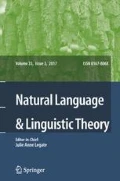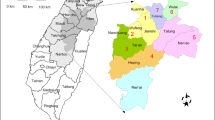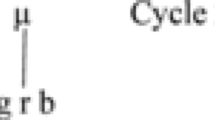Abstract
This article reports on an acoustic study of voicing in obstruents followed by a sonorant across a word boundary in two dialects of Dutch: East- and West-Flemish. In both varieties only gradient phonetic voicing was typically found in word-final stops when a sonorant followed in the next word. In addition, West-Flemish showed optional categorical voicing in word-final pre-sonorant fricatives. The voicing of fricatives is argued to be phonological, as it extends beyond the scope of automated coarticulation, and as the data pattern to form a distinct phonetic voicing target. However, the phonetic results do not support the hypothesis that West-Flemish sonorants are laryngeally specified and thus able to spread voicing to neighbouring fricatives. Instead, fricative voicing is proposed to be an optional positional realisation in West-Flemish. Although the process cannot be directly motivated by reference to the phonological specifications of the segments surrounding its target, it makes sense in terms of perceptual factors leading to diachronic reanalysis. The West-Flemish positional variation may arise when partially voiced fricatives are perceived and subsequently reanalysed as categorically voiced by listeners, as proposed by Jansen (2004). It is further argued that fricatives are more likely than stops to be reinterpreted as voiced, as additional acoustic cues prevent voiced percepts in passively voiced stops.










Similar content being viewed by others
Notes
Jansen (2004:36) provides the following definition of spontaneous (passive) voicing: “Sounds or parts of sounds are said to be passively voiced if a closed equilibrium position of the vocal folds and normal subglottal pressure (according to Stevens (1998), 8000 dyne/cm2 / 800 Pa is typical) are sufficient to initiate or maintain the physical conditions for vocal fold vibration. Sonorants are typical examples of passively voiced sounds: because their supralaryngeal articulations allow air to escape freely from the supraglottal vocal tract (either through the oral or nasal tract or both) the supraglottal pressure during these sounds remains approximately equal to atmospheric pressure.”
There are, however, reports of stop voicing word-finally before a vowel, e.g.
 in some Limburg dialects and in the northwest of East Flanders (De Schutter and Taeldeman 1986).
in some Limburg dialects and in the northwest of East Flanders (De Schutter and Taeldeman 1986).Jiménez and Lloret (2008) report a dialect continuum in Catalan, where all dialects except Central Valencian have sibilant voicing before vowels. In addition to sibilant voicing, Central Catalan has (variable) /f/ voicing, while Alicantino is reported to voice all obstruents.
While the vowel in the adjective of the target items was thus held constant before voiced and voiceless fricatives (
 ), and before voiced and voiceless stops (
), and before voiced and voiceless stops ( ), no four adjectives could be found with the same vowel before underlying voiced and voiceless fricative and stops.
), no four adjectives could be found with the same vowel before underlying voiced and voiceless fricative and stops.The first peak in the distribution is associated with somewhat shorter voicing in fricatives followed by voiceless stops than in fricatives followed by sonorants. A possible explanation lies in coarticulation which might be present when a voiceless stop follows, but is absent in the presence of a following sonorant.
Figure 7 shows a dip in the distribution of voicing duration in voiceless obstruents produced by East-Flemish speakers. Interesting though it is, we do not attempt to provide a full account for this bimodality, and we refrain from discussing whether it should in any way be reflected in the feature inventory of East Flemish. For our purposes it is only crucial to observe that East-Flemish speakers did not typically produce categorical voicing before a sonorant.
For our purposes it is irrelevant whether the feature is generic [(+)voice], or a more sonorant-specific feature, e.g. [Sonorant Voice] (cf. Rice 1993). We also leave aside the issue of whether the feature in question is privative, binary, or ternary at the phonological level.
In the absence of phonological voice assimilation, English provides a good test case of for the effect of voicing targets on phonetic voice coarticulation.
In comparison, stops followed by a voiced stop typically had continuous voicing extending throughout the entire cluster.
The prediction that word-final obstruents in final-devoicing languages do not have their own voicing targets is confirmed by the current data, as we found no significant effect of the underlying voicing on the phonetic realisation of voicing in word-final stops or fricatives (see Sect. 3.1).
The participants in our experiment neutralised the underlying voicing contrast in the word-final position. Consequently, word-final stops studied in the current experiment do not provide information on how the voicing is cued.
We wish to thank Mirjam Ernestus for granting us permission to reproduce the left panel of Fig. 9.
Some observations are missing as the scale has been adjusted to correspond to Ernestus (2000). Also the durations are noticeably longer in the current data, which might be an effect of the reading task.
Jansen (2004) notes that friction noise is mechanically linked to voicing, and so it might shorten as an effect of passive voicing.
A reviewer asks why we measured maximum intensity for high frequencies and minimum intensity for low frequencies, rather than use the same intensity measure. Our rationale was to use the most conservative approach available, and since we find that the low intensity minimum is, on average, higher than the high frequency maximum, the effect can only increase if any other intensity measures (e.g. means) are considered.
Westbury and Keating (1986) focus on the intervocalic position in their discussion, but their conclusions seem readily extendable to the broader intersonorant context, since the aerodynamics of voicing is similar in sonorant consonants and in vowels.
“If the problem with stops and voicing is that the accumulation of air in the oral cavity eventually quenches voicing, then this constraint should be less evident with fricatives since they have continuous venting of oral air pressure. So much for a priori prediction, since this turns out not to be true” (Ohala 1983:201).
References
Bates, Douglas, and Martin Maechler. 2009. lme4: Linear mixed-effects models using S4 classes. URL http://CRAN.R-project.org/package=lme4. Accessed 13 August 2010. R package version 0.999375-32.
Bermúdez-Otero, Ricardo. 2001. Voicing and continuancy in Catalan: A nonvacuous Duke-of-York gambit and a Richness-of-the-Base paradox. URL http://www.bermudez-otero.com/Catalan.pdf. Accessed 10 July 2010. Ms., University of Manchester, Manchester.
Bermúdez-Otero, Ricardo. 2011. Cyclicity. In Blackwell companion to phonology, Vol. IV, eds. Marc van Oostendorp, Colin J. Ewen, Elizabeth Hume, and Keren Rice, 2019–2048. Chichester: Wiley/Blackwell.
Blaho, Sylvia. 2008. The syntax of phonology: A radically substance-free approach. PhD Dissertation, Universitetet i Tromsø, Tromsø.
Boersma, Paul, and David Weenink. 2009. Praat: doing phonetics by computer [Computer programme]. URL http://www.praat.org/. Accessed 15 October 2009. Version 5.1.12.
Booij, Geert. 1995. The phonology of Dutch. Oxford: Clarendon.
Bradley, Travis, and Ann Marie Delforge. 2006. Systemic contrast and the diachrony of Spanish sibilant voicing. In Historical romance linguistics: retrospectives and perspectives, eds. Randall Gess and Deborah Arteaga, 19–52. Amsterdam: Benjamins.
Colina, Sonia. 2009. Sibilant voicing in Ecuadorian Spanish. Studies in Hispanic and Lusophone Linguistics 2: 3–29.
Collins, Beverley, and Inger M. Mees. 1999. The phonetics of English and Dutch, 4th edn. Leiden: Brill.
Cooper, William E., and Martha Danly. 1981. Segmental and temporal aspects of utterance-final lengthening. Phonetica 38: 106–115.
Daniloff, Raymond G., and Robert E. Hammarberg. 1973. On defining coarticulation. Journal of Phonetics 1: 239–248.
De Schutter, Georges, and Johan Taeldeman. 1986. Assimilatie van Stem in de Zuidelijke Nederlandse Dialekten. In Vruchten van z’n akker: opstellen van (oud-) medewerkers en oud-studenten voor prof. V.F. vanacker, eds. M. Devos and J. Taeldeman, 91–133. Ghent: Seminarie voor Nederlandse Taalkunde.
Ernestus, Mirjam. 2000. Voice assimilation and segment reduction in casual Dutch. PhD dissertation, Free University of Amsterdam, Amsterdam/Holland Institute of Generative Linguistics.
Forrez, Gabriël. 1966. Relevante parameters van de stemhebbende fricatief /z/. Inst. Perceptie Onderzoek Verslag (Eindhoven).
Hofhuis, Elise, Carlos Gussenhoven, and Toni Rietveld. 1995. Final lengthening at prosodic boundaries in Dutch. In Proceedings of 13th International Congress of Phonetic Sciences, eds. Kjell Elenius and Peter Branderut. Vol. 1, 154–157. Stockholm.
Hualde, José Ignacio. 1992. Catalan. London: Routledge.
Itô, Junko. 1986. Syllable theory in prosodic phonology. PhD dissertation, University of Massachusetts, Amherst.
Jansen, Wouter. 2004. Laryngeal contrast and phonetic voicing: A laboratory phonology approach to English, Hungarian, and Dutch. PhD Dissertation. University of Groningen, Groningen.
Jiménez, Jesús, and Maria-Rosa Lloret. 2008. Asimetrías perceptivas y similitud articulatoria en la asimilación de sonoridad del catalán. Cuadernos de Lingüística del I.U.I. Ortega y Gasset 15: 71–90.
Kiparsky, Paul. 1985. Some consequences of lexical phonology. In Phonology Yearbook, eds. Collin Ewen and John Anderson, Vol. 2, 83–138.
Klatt, Dennis H. 1975. Vowel lengthening is syntactically determined in a connected discourse. Journal of Phonetics 3: 129–140.
Ladefoged, Peter, and Ian Maddieson. 1996. The sounds of the world’s languages. Cambridge: Blackwell.
Lipski, John M. 1989. /s/-voicing in Ecuadoran Spanish: patterns and principles of consonantal modification. Lingua 79: 49–71.
Lisker, Leigh, and Arthur S. Abramson. 1964. A cross-language study of voicing in initial stops: acoustical measurements. Word 20: 384–422.
Menert, Ludmila. 1994. Experiments on voice assimilation in Dutch: prosodic structures and tempo. PhD dissertation, University of Utrecht, Utrecht.
Ohala, John J. 1981. The listener as a source of sound change. In Papers from the parasession on language and behavior, eds. C. S. Masek, R. A. Hendrick, and M. F. Miller, 178–203. Chicago: Chicago Linguistic Society.
Ohala, John J. 1983. The origin of sound patterns in vocal tract constraints. In The production of speech, ed. Peter MacNeilage, New York: Springer.
Prince, Alan, and Paul Smolensky. 1993/2004. Constraint interaction in generative grammar. Malden: Blackwell.
R Development Core Team. 2005. R: A language and environment for statistical computing. R Foundation for Statistical Computing, Vienna, Austria. ISBN 3-900051-07-0. URL http://www.R-project.org.
Rice, Keren D. 1993. A reexamination of the feature [Sonorant]: the status of ‘sonorant obstruents’. Language 69: 308–344.
Robinson, Kimball L. 1979. On the voicing of intervocalic s in the Ecuadorian highlands. Romance Philology 33: 132–143.
Rubach, Jerzy. 1996. Nonsyllabic analysis of voice assimilation in Polish. Linguistic Inquiry 27: 69–110.
Silverman, Daniel. 2006. A critical introduction to phonology: of sound, mind, and body. London: Continuum.
Simon, Ellen. 2010. Voicing in contrast. Acquiring a second language laryngeal system. Ghent: Academia Press. (Ginkgo series).
Slis, Iman Hans. 1985. The voiced-voiceless distinction and voice assimilation in Dutch. PhD dissertation, University of Nijmegen, Nijmegen.
Slis, Iman Hans, and Antonie Cohen. 1969. On the complex regulating the voiced-voiceless distinction I. Language and Speech 12: 80–102.
Stevens, Kenneth. 1998. Acoustic phonetics. Cambridge: MIT Press.
Stevens, Kenneth N., Sheila E. Blumstein, Laura Glicksman, Martha Burton, and Kathleen Kurowski. 1992. Acoustic and perceptual characteristics of voicing in fricatives and fricative clusters. Journal of the Acoustical Society of America 91: 2979–3000.
Ternes, Elmar 1970. Grammaire structurale du Breton de L’Ile de Groix (dialecte occidental). Heidelberg: Carl Winter Universitätsverlag.
Torreblanca, Máximo. 1978. El fonema /s/ en la lengua española. Hispania 61: 498–503.
Torreblanca, Máximo. 1986a. La ‘s’ sonora prevocálica en el español moderno. Thesaurus 41: 59–69.
Torreblanca, Máximo. 1986b. La sonorización de /s/ y /θ/ en el noroeste toledano. Ligüística Española Actual 8: 5–19.
Venables, William N., and Brian D. Ripley. 2002. Modern applied statistics with S, 4th edn. New York: Springer. URL http://www.stats.ox.ac.uk/pub/MASS4. Accessed 24 July 2010. ISBN 0-387-95457-0.
Weijnen, Antonius. 1991. Vergelijkende Klankleer van de Nederlandse Dialecten. The Hague: SDU.
Westbury, John R., and Patricia A. Keating. 1986. On the naturalness of stop consonant voicing. Journal of Linguistics 22: 145–166.
Wheeler, Max W. 1986. Catalan sandhi phenomena. In Sandhi phenomena in the languages of Europe, ed. Henning Andersen, Vol. 33 of Trends in linguistics, studies and monographs, 475–488. Berlin: de Gruyter.
Wheeler, Max W. 2005. The phonology of Catalan. New York: Oxford University Press.
Acknowledgements
We would like to thank the speakers for their participation in the study, Peter Jurgec for help with the Praat scripts, and Jingsong Yuan for advice on the Linear Discriminant Analysis. The paper has benefitted from comments and suggestions by Ricardo Bermúdez-Otero, Yuni Kim, Petya Rácz, Koen Sebregts, Dan Silverman, as well as the editor, Michael Kenstowicz, and three anonymous reviewers. The research reported on in this article has been made possible thanks to a doctoral grant from the Arts and Humanities Research Council (AHRC, www.ahrc.ac.uk) to the first author, and a postdoctoral research grant from the Fund for Scientific Research Flanders (F.W.O.) to the second author.
Author information
Authors and Affiliations
Corresponding author
Rights and permissions
About this article
Cite this article
Strycharczuk, P., Simon, E. Obstruent voicing before sonorants. The case of West-Flemish. Nat Lang Linguist Theory 31, 563–588 (2013). https://doi.org/10.1007/s11049-013-9189-5
Received:
Accepted:
Published:
Issue Date:
DOI: https://doi.org/10.1007/s11049-013-9189-5





 in some Limburg dialects and in the northwest of East Flanders (De Schutter and Taeldeman
in some Limburg dialects and in the northwest of East Flanders (De Schutter and Taeldeman  ), and before voiced and voiceless stops (
), and before voiced and voiceless stops ( ), no four adjectives could be found with the same vowel before underlying voiced and voiceless fricative and stops.
), no four adjectives could be found with the same vowel before underlying voiced and voiceless fricative and stops.